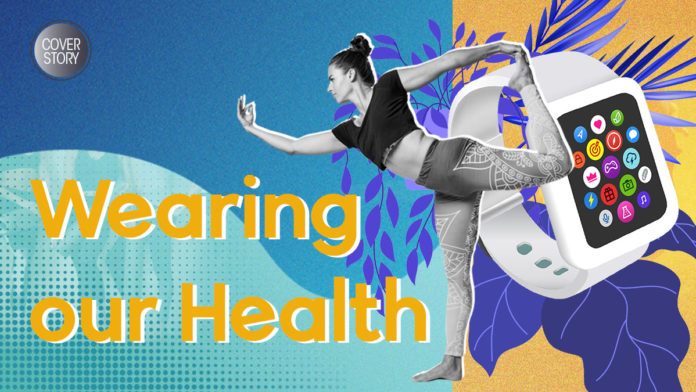The wearable market has been growing steadily in the last few years. A recent study has estimated that it will accelerate at a compounded annual growth rate of 13% to 2024.
Wearables are extremely useful, providing users all the important information about their bodies in real time. They are useful for people who like to keep healthy and want to monitor how their bodies respond to various activities. They are also useful for people who have comorbidities and are worried if they are overexerting themselves.
As more and more people get into wearables, these devices will definitely play a part in the future of healthcare.
Leveraging wearables to stop pandemics
Last year, a study was published in the Lancet, a US digital health peer reviewed journal, about using smartwatches and fitness bands to map out influenza outbreaks in the US. The study used data submitted by volunteer smartwatch users to know when they were sick and how many were in a certain area, creating a map of where sick people clustered and when such outbreaks occurred.
The study found that by using fitness tracker data, they can increase the
prediction accuracy of state outbreaks by 6.3 to 32.9%, a huge improvement over current systems.
As wearables become much complex and their sensors much more accurate, we may find a future where the sick are quickly isolated, and pandemics
prevented, all thanks to your fitness bands.
Real time tracking
Another possibility is the integration of 5G technology within wearables to enable
real time tracking. 5G technology leverages its ultrafast connection speed and extremely low latency. This means that data is sent and received at very fast speeds.
5G may unlock new possibilities of using wearables in aid to telemedicine. Imagine a world where a telemedicine doctor can see a patient’s vitals just through his
wearable. This would enable doctors and first responders to give appropriate treatment before rushing to the hospital.
Another way of leveraging 5G in wearables is through physical workouts. We can expect a form of workout that leverages real time data sent to trainers. This would
allow them to either lighten the load or push us harder to achieve our goals.
AI mapping out what needs to be done
Wearables are, in essence, “smart” technology. Still, the future will make them even smarter by leveraging AI and machine learning along with newer and better sensors to map out the whole body.
Future wearables with advanced AI can essentially map out what our body really needs and at what time. A possible scenario for this is in dispensing medicines. Scientists are now looking at ways that smarter wearables can notify us about the best time to take our medicines. AI in future wearables may leverage smarter sensors to determine all facets of our bodies (such digestion, metabolism, blood oxygen levels) to know when medicines will deliver the most beneficial effects. Another area to be excited about in the future use of wearables for health is the arrival of smarter sensors.
The last few years gave us ECG and blood oxygen saturation monitoring on our wrists. The future might give us sensors for determining our body’s current hydration level, blood pressure, and many more to give us more details about our bodies.
Going deeper than just wearing
The future of wearables in healthcare isn’t limited to external, visible devices such as glasses, watches, or hearing aids. In fact, future wearables may be hidden or invisible, either as implants or camouflaged on our bodies.
Several studies are being conducted on smart skins, wearables that stick on the skin of users. Currently, studies range from consumer level enhancements like smartwatches to prosthetics for disabled people to help them regain some of their lost body functions. Smart skins are now being looked at as a way for people who have lost nerve functions on their limbs to gain back some functionality. Other studies are looking at how smart skins can determine one’s surroundings to monitor conditions and then tell users whether they would be safe outdoors or if they need to stay inside.
Some scientists are also studying ways to implant smart devices within our bodies. Microchipping is already happening.
Even if not yet mainstream, some people have already implanted microchip
computers within their bodies. These chips have multiple uses, including in depth health monitoring.
An important thing to note about implant technology is that it is still not fully ready for consumer implementation. Studies are still being conducted on the effects of having implanted computers within the human body and whether they are safe for mass use.
Words by Gabriel Pe
Also published in Gadgets Magazine March 2021 Issue
